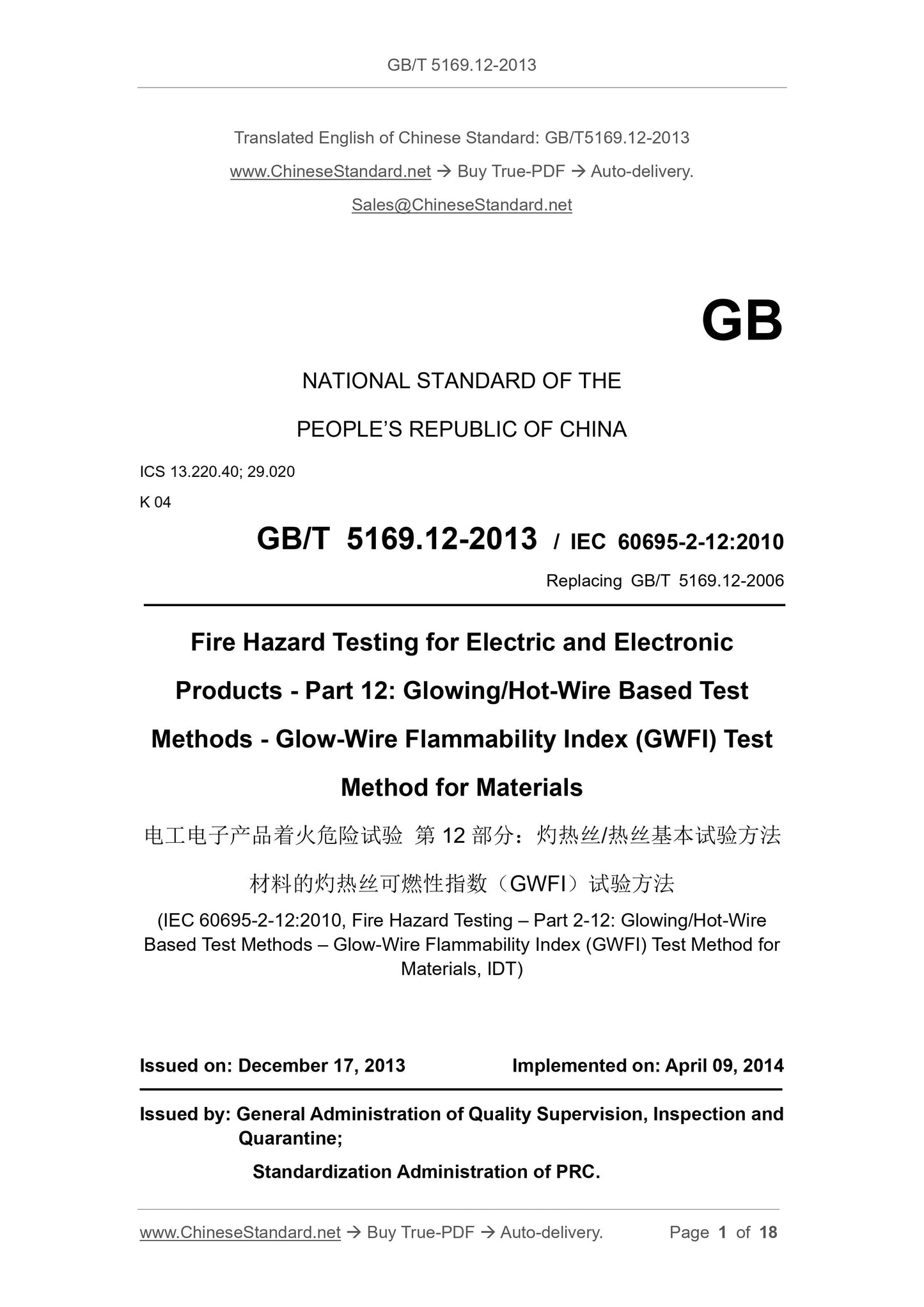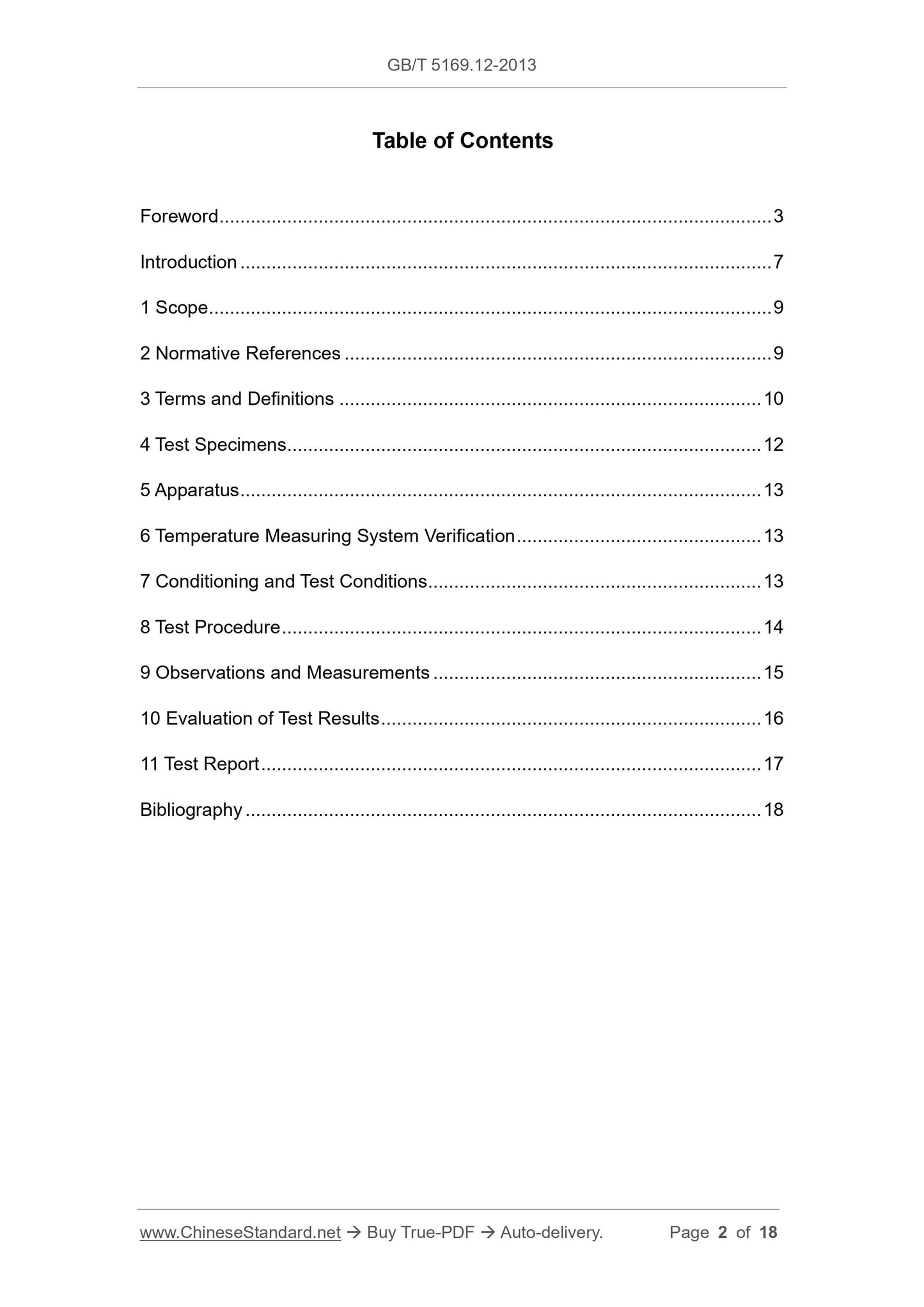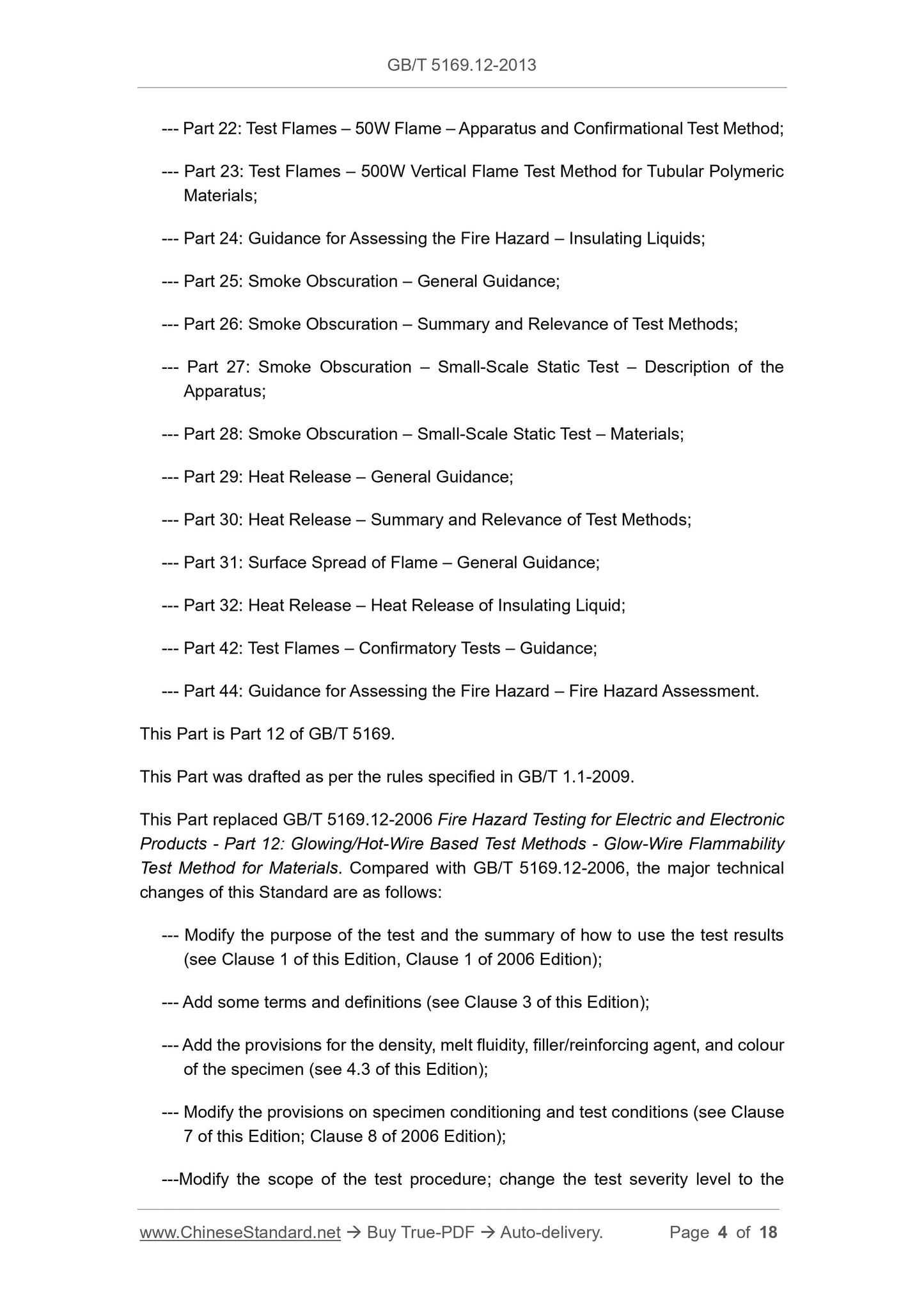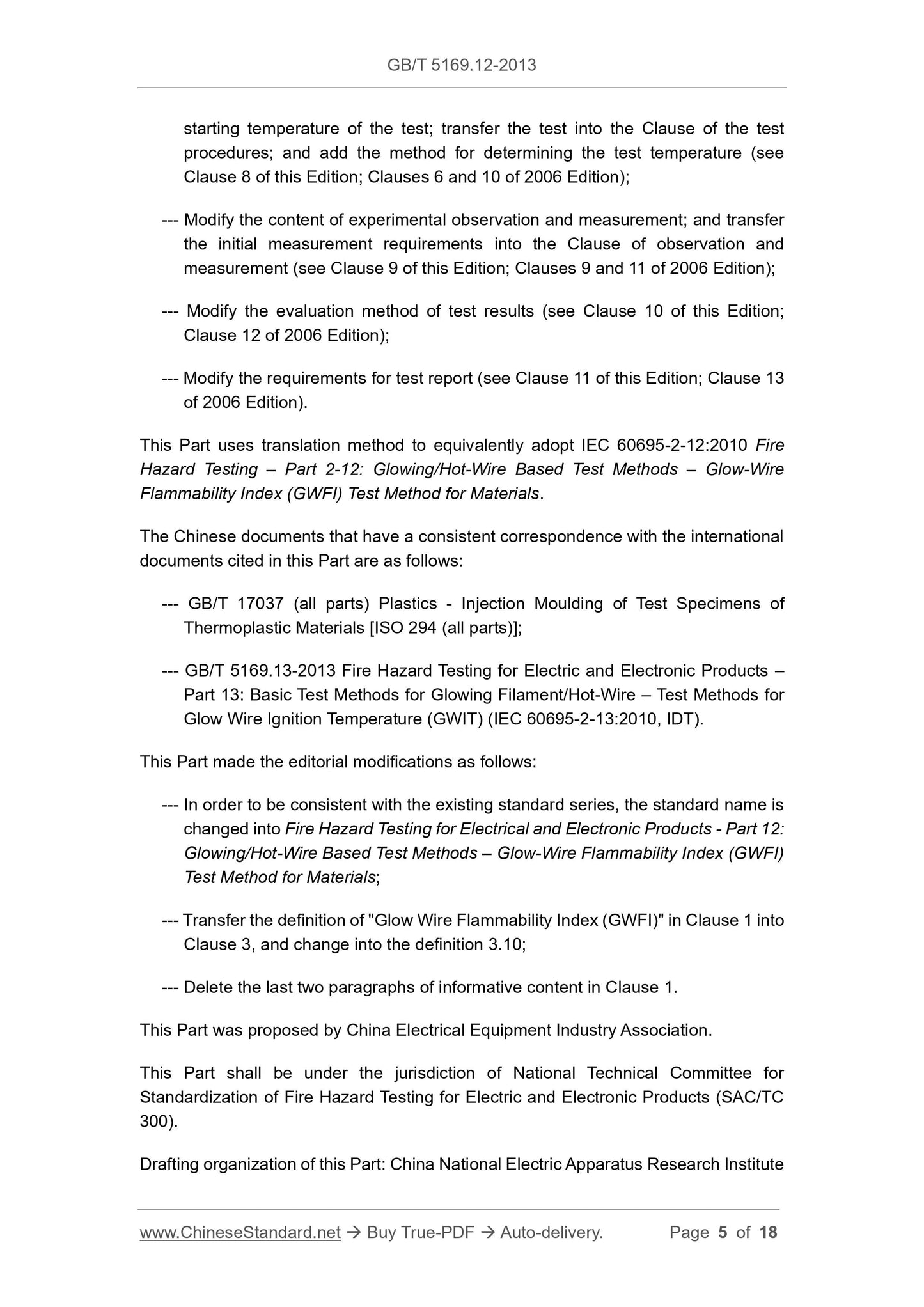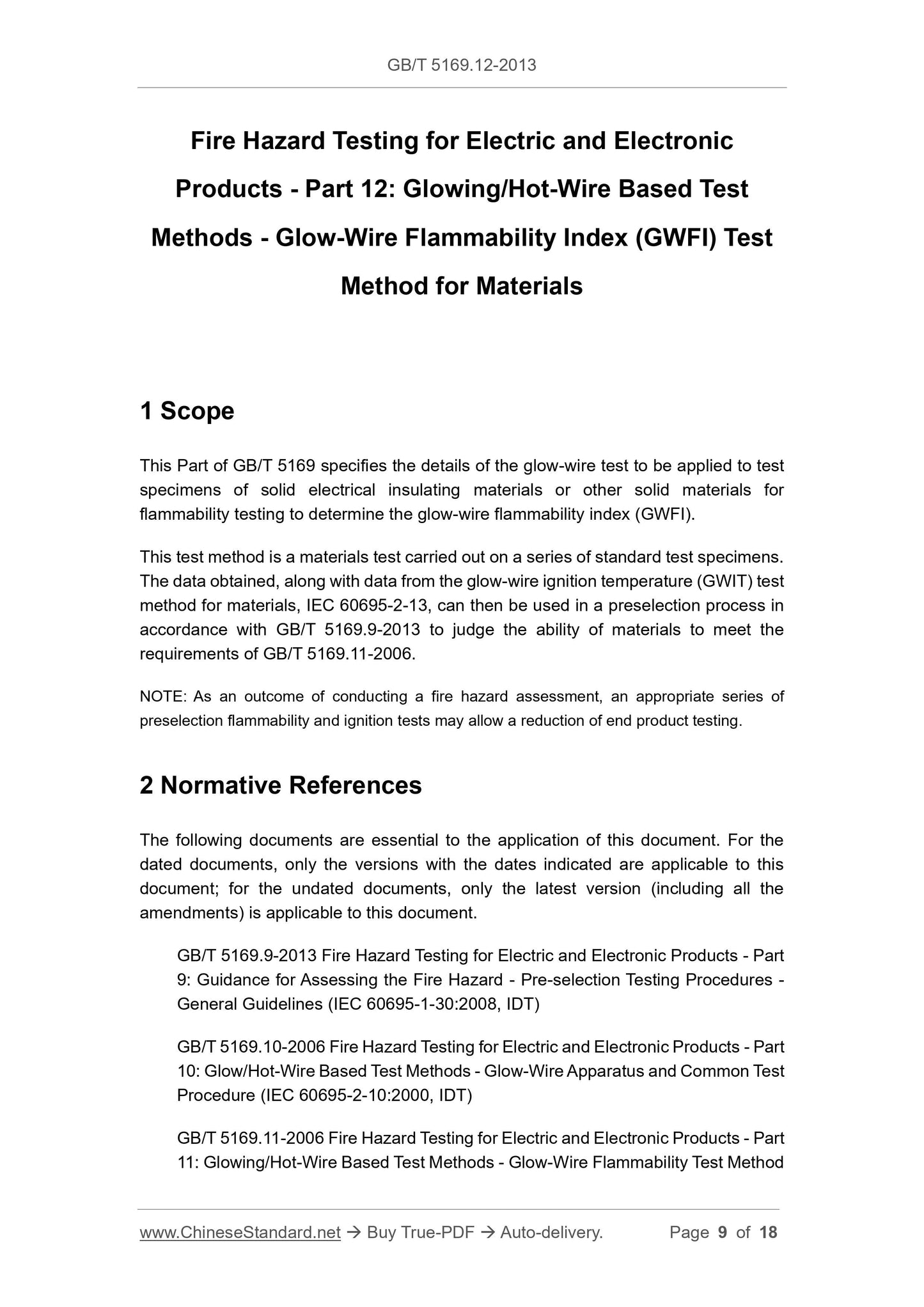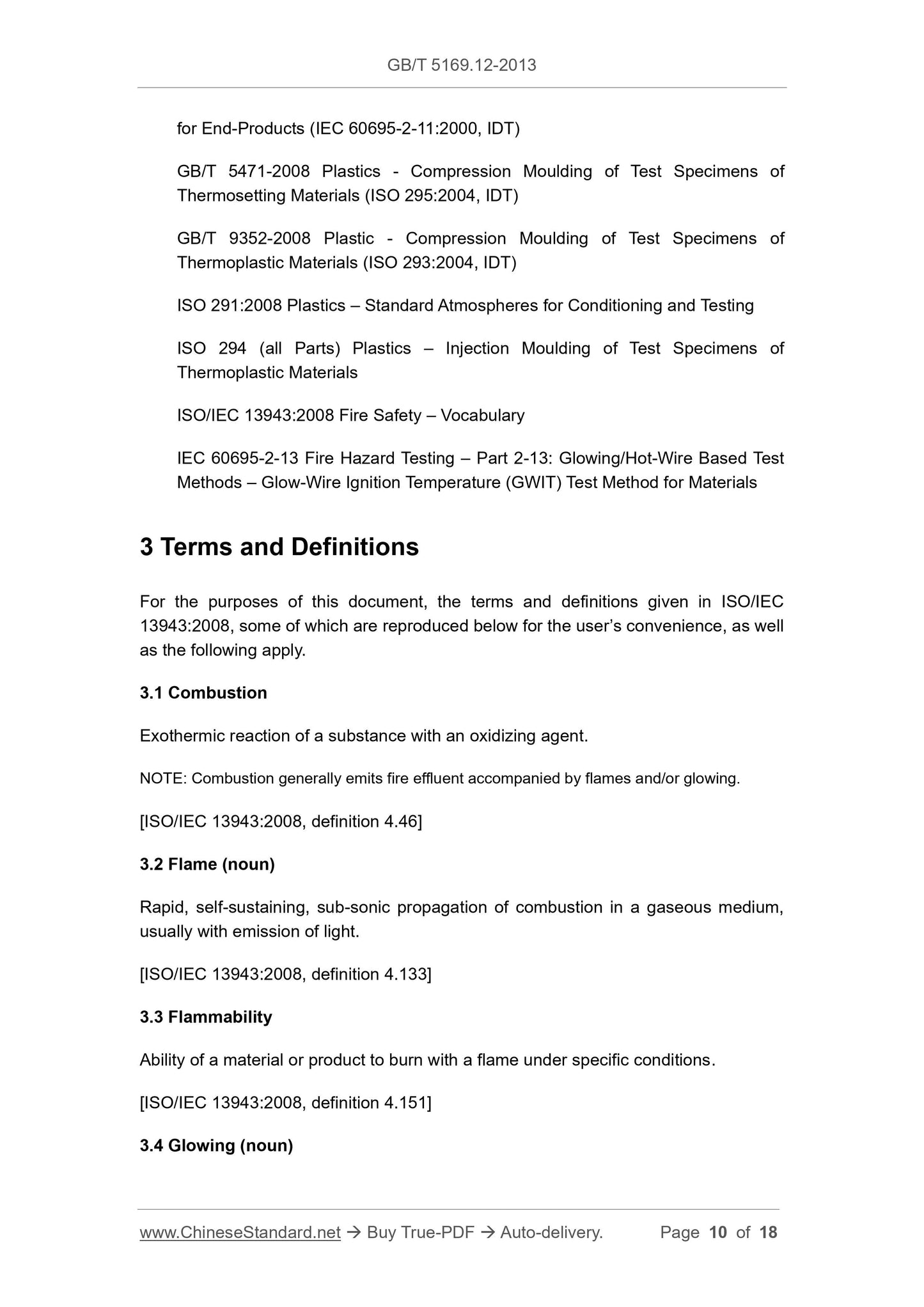1
/
of
7
www.ChineseStandard.us -- Field Test Asia Pte. Ltd.
GB/T 5169.12-2013 English PDF (GB/T5169.12-2013)
GB/T 5169.12-2013 English PDF (GB/T5169.12-2013)
Regular price
$200.00
Regular price
Sale price
$200.00
Unit price
/
per
Shipping calculated at checkout.
Couldn't load pickup availability
GB/T 5169.12-2013: Fire hazard testing for electric and electronic products -- Part 12: Glowing/hot-wire based test methods -- Glow-wire flammability index (GWFI) test method for materials
Delivery: 9 seconds. Download (and Email) true-PDF + Invoice.Get Quotation: Click GB/T 5169.12-2013 (Self-service in 1-minute)
Newer / historical versions: GB/T 5169.12-2013
Preview True-PDF
Scope
This Part of GB/T 5169 specifies the details of the glow-wire test to be applied to testspecimens of solid electrical insulating materials or other solid materials for
flammability testing to determine the glow-wire flammability index (GWFI).
This test method is a materials test carried out on a series of standard test specimens.
The data obtained, along with data from the glow-wire ignition temperature (GWIT) test
method for materials, IEC 60695-2-13, can then be used in a preselection process in
accordance with GB/T 5169.9-2013 to judge the ability of materials to meet the
requirements of GB/T 5169.11-2006.
NOTE: As an outcome of conducting a fire hazard assessment, an appropriate series of
preselection flammability and ignition tests may allow a reduction of end product testing.
Basic Data
| Standard ID | GB/T 5169.12-2013 (GB/T5169.12-2013) |
| Description (Translated English) | Fire hazard testing for electric and electronic products -- Part 12: Glowing/hot-wire based test methods -- Glow-wire flammability index (GWFI) test method for materials |
| Sector / Industry | National Standard (Recommended) |
| Classification of Chinese Standard | K04 |
| Classification of International Standard | 13.220.40; 29.020 |
| Word Count Estimation | 12,179 |
| Older Standard (superseded by this standard) | GB/T 5169.12-2006 |
| Quoted Standard | GB/T 5169.9-2013; GB/T 5169.10-2006; GB/T 5169.11-2006; GB/T 5471-2008; GB/T 9352-2008; ISO 291-2008; ISO 294-1; ISO 294-2; ISO 294-3; ISO 294-4; ISO 294-5; ISO/IEC 13943-2008; IEC 60695-2-13 |
| Adopted Standard | IEC 60695-2-12-2010, IDT |
| Regulation (derived from) | National Standards Bulletin No. 25 of 2013 |
| Issuing agency(ies) | General Administration of Quality Supervision, Inspection and Quarantine of the People's Republic of China, Standardization Administration of the People's Republic of China |
| Summary | This standard specifies the determination of the glow wire flammability index (GWFI) on solid electrical and electronic insulating materials or other solid material specimens of glow-wire test methods. This test method is a standard material test specimen |
Share
